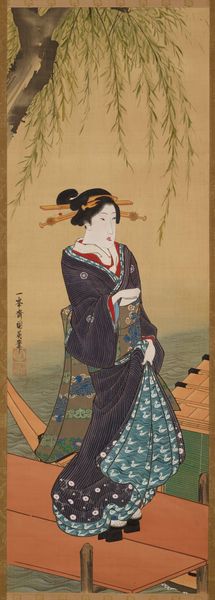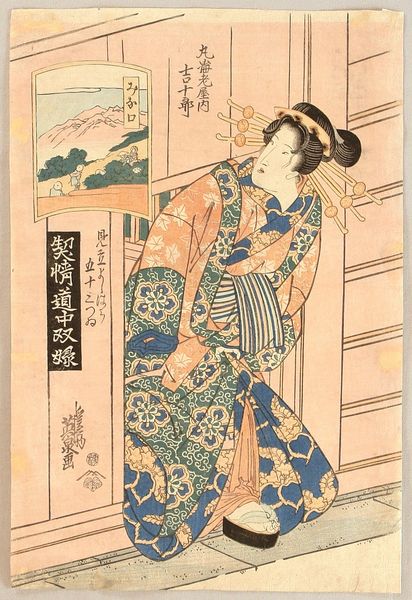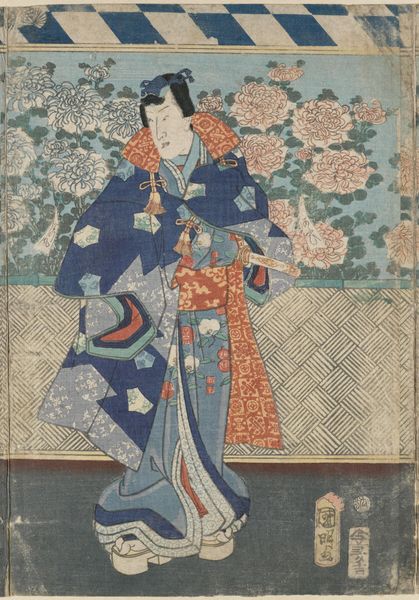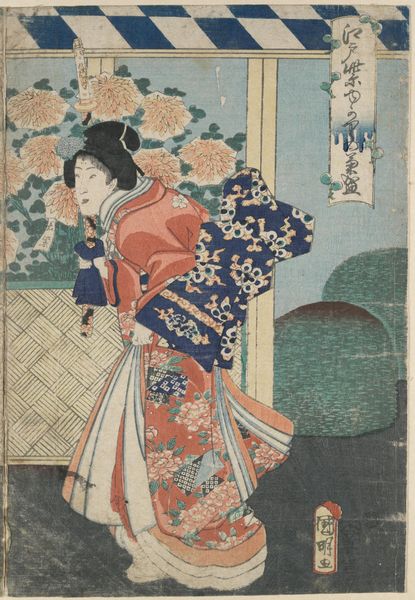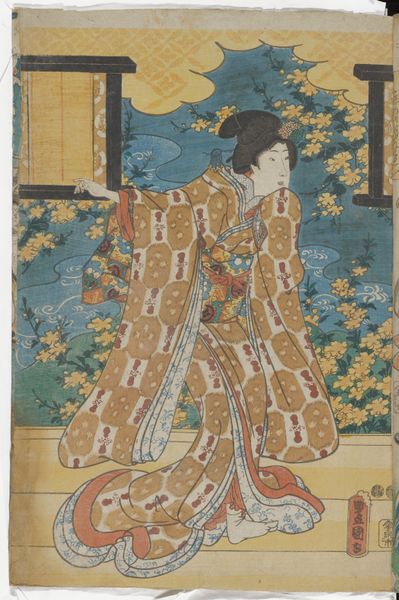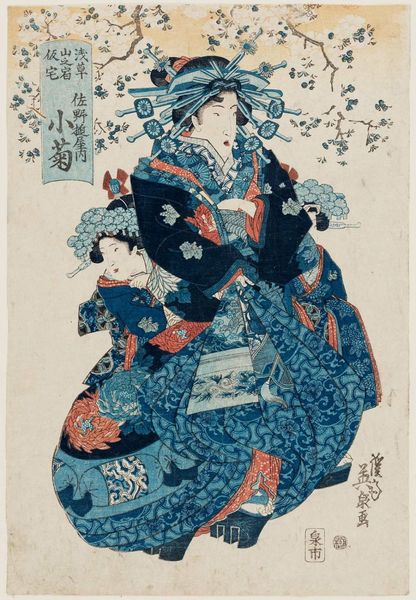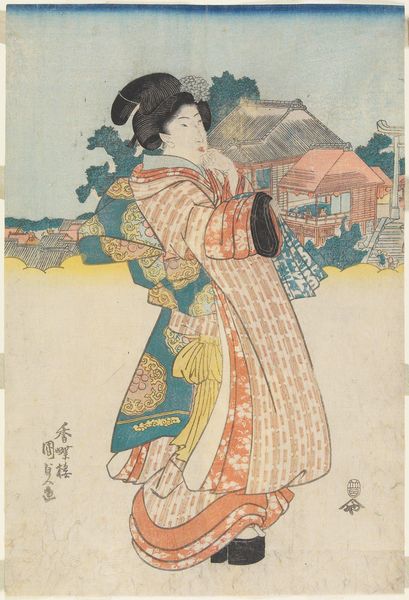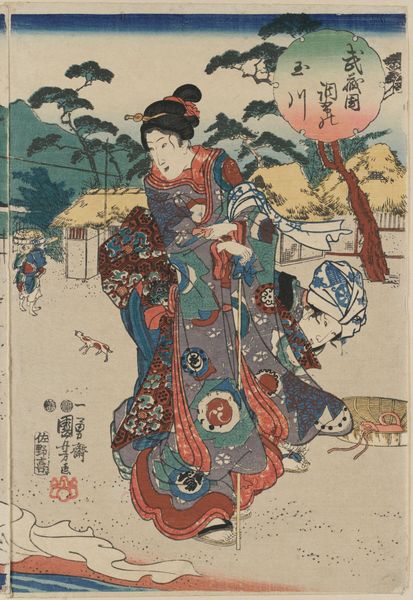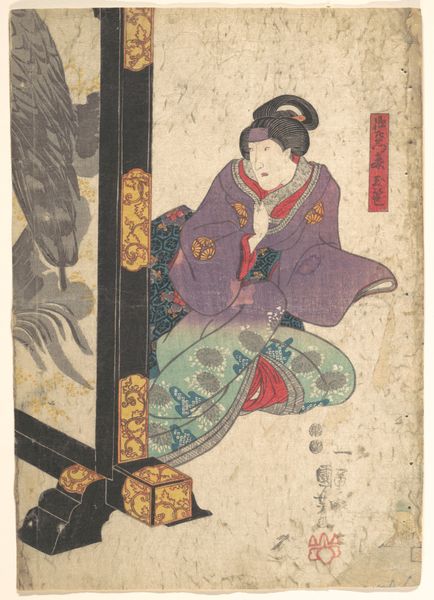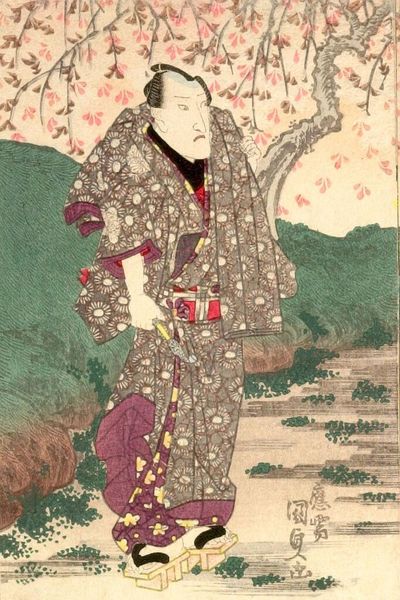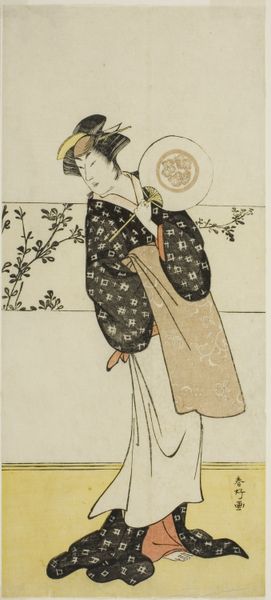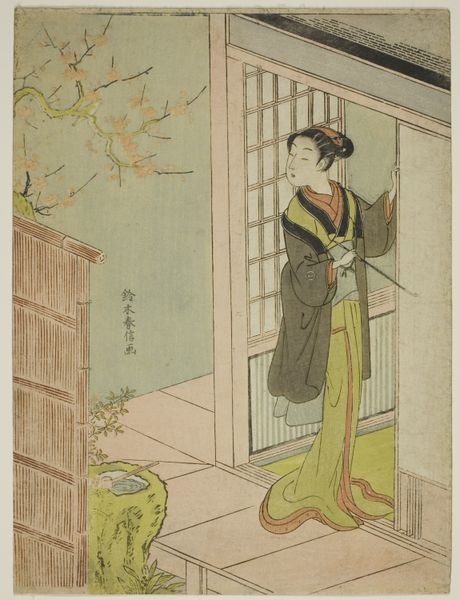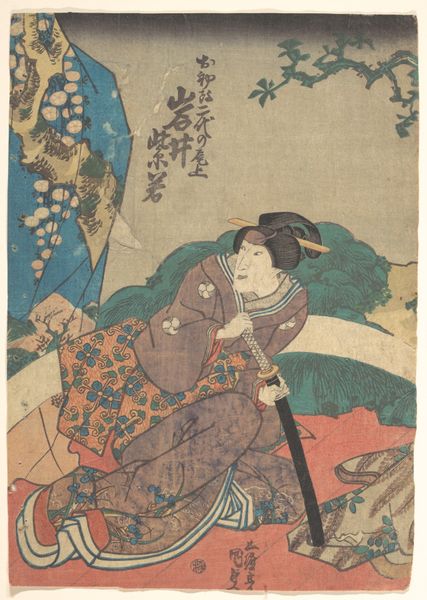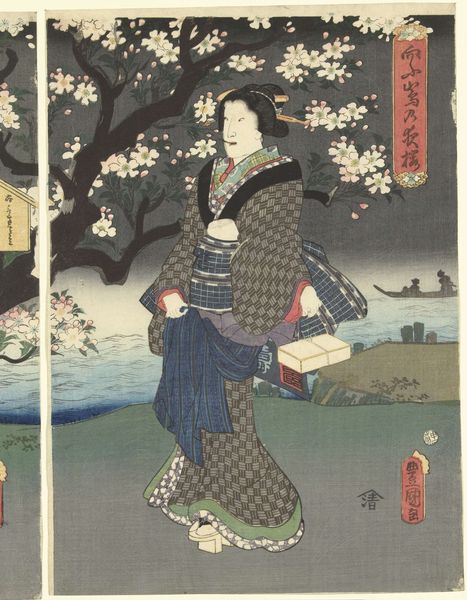
mixed-media, print, ink
#
portrait
#
mixed-media
# print
#
landscape
#
ukiyo-e
#
ink
#
genre-painting
#
mixed media
Dimensions: 14 3/16 × 9 5/8 in. (36.1 × 24.4 cm) (image, vertical ōban)
Copyright: Public Domain
Utagawa Hiroshige created this woodblock print titled *Iris Garden at Horikiri.* The print offers us a window into 19th-century Japan, a society steeped in tradition yet on the cusp of modernization. Hiroshige, working within the *ukiyo-e* tradition, which translates to "pictures of the floating world," captures a scene of leisure and beauty. Look at the central figure, a woman adorned in a beautiful kimono with a serene gaze. She's standing on a wooden structure overlooking an iris garden. Consider the historical context: during this era, class distinctions were pronounced, and fashion, like art, served as a marker of status. A woman's attire and demeanor were carefully constructed to convey social standing. The presence of other figures in the iris garden, some with parasols, suggests a public space for socializing and display. The iris garden itself, a curated landscape, reflects a deep appreciation for nature, yet it's nature molded by human hands. Hiroshige masterfully balances natural beauty with the cultural norms of his time. There is a sense of both freedom and constraint, a floating world indeed.
Comments
minneapolisinstituteofart almost 2 years ago
⋮
This print illustrates a fashion trend that emerged in the last half of the 19th century. Along with somber grays and browns, dark blue was one of the most popular colors among the middle class citizens of the Edo city. The austere elegance of this woman's indigo robe is enhanced by the red of her inner robe that is modestly shown at her cuffs, hem, and collar. The fashion for a more somber, less feminine look was referred to as "iki" in Japanese and became the fashion trend of the late 19th century. Here, pattern has been relegated to the hem of her kimono and consists of a stylized stream and fallen cherry blossoms-adding a somber poetic sensibility to the woman's ensemble. The "iki" aesthetic was more commonly seen among geisha, professional entertainers (dancers and musicians) who worked in the pleasure quarters. Thus, geisha replaced the prostitutes as fashion leaders.
Join the conversation
Join millions of artists and users on Artera today and experience the ultimate creative platform.
